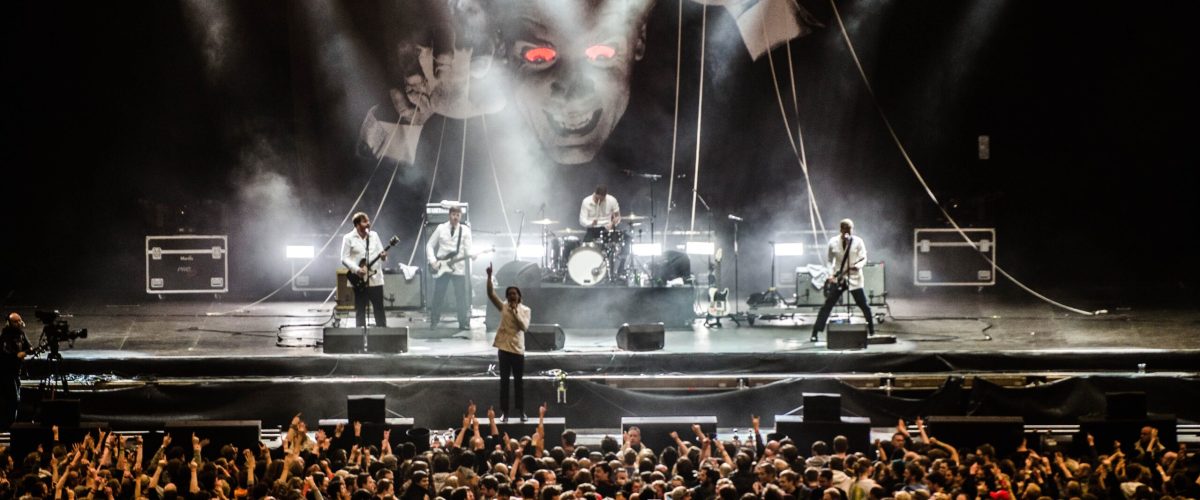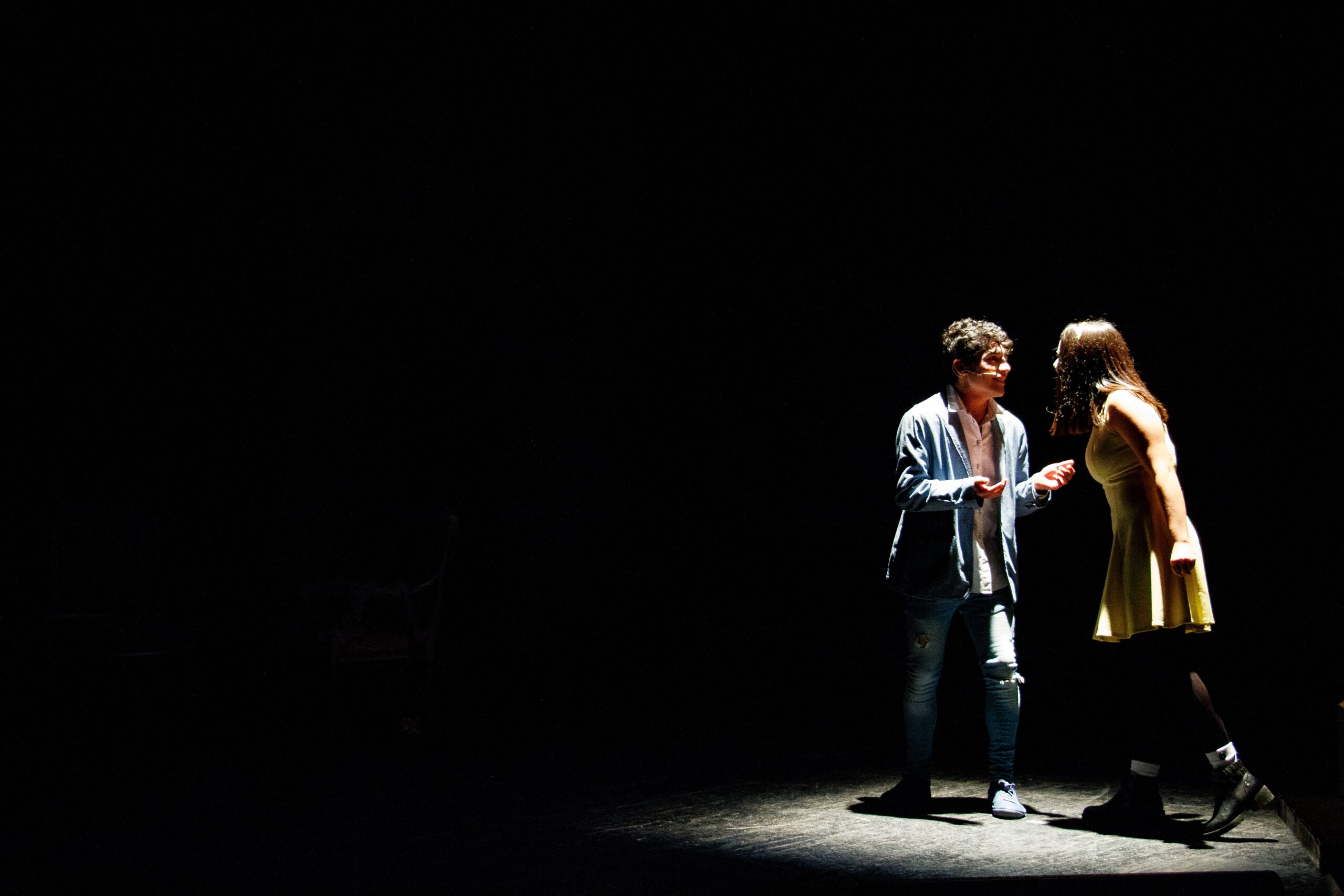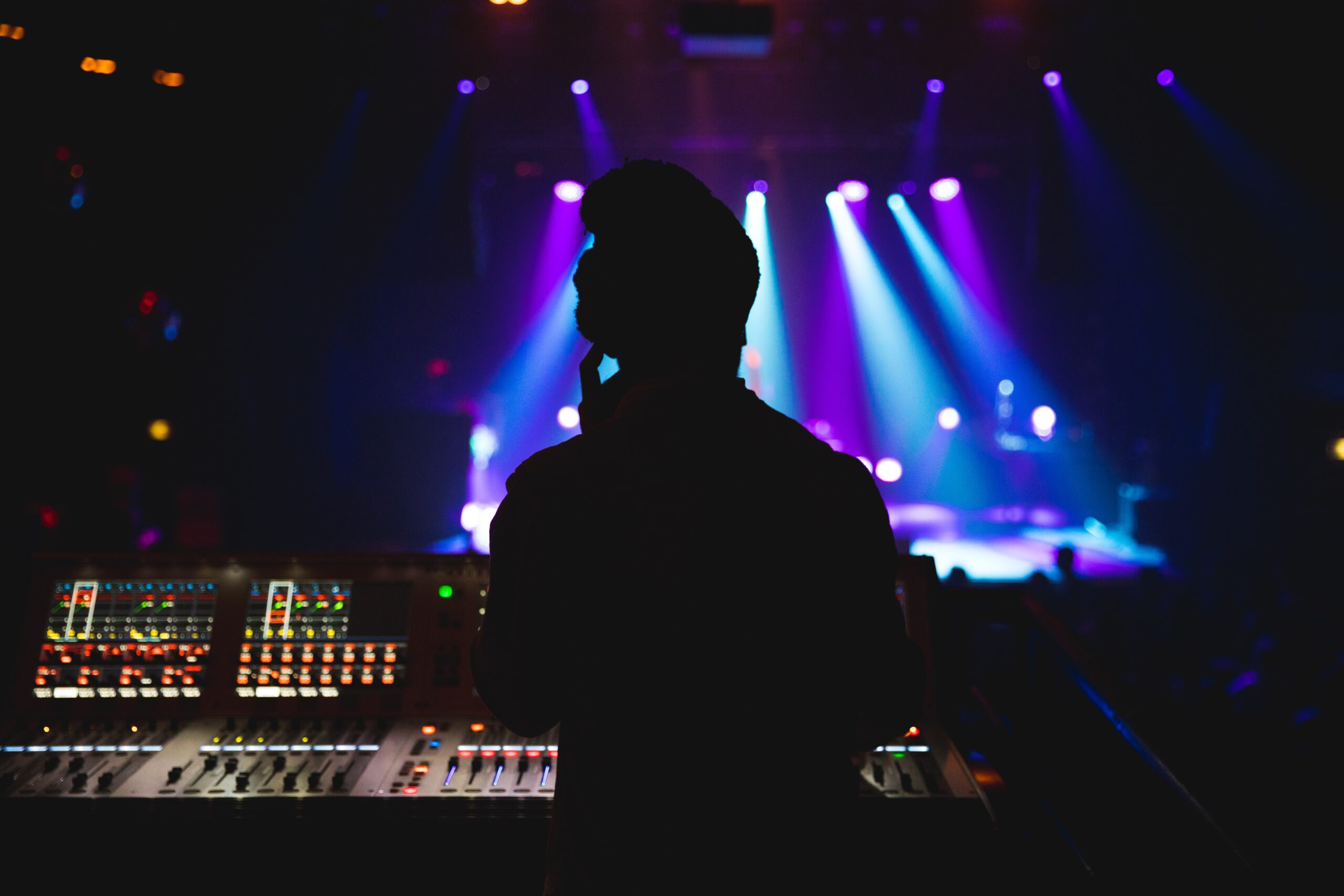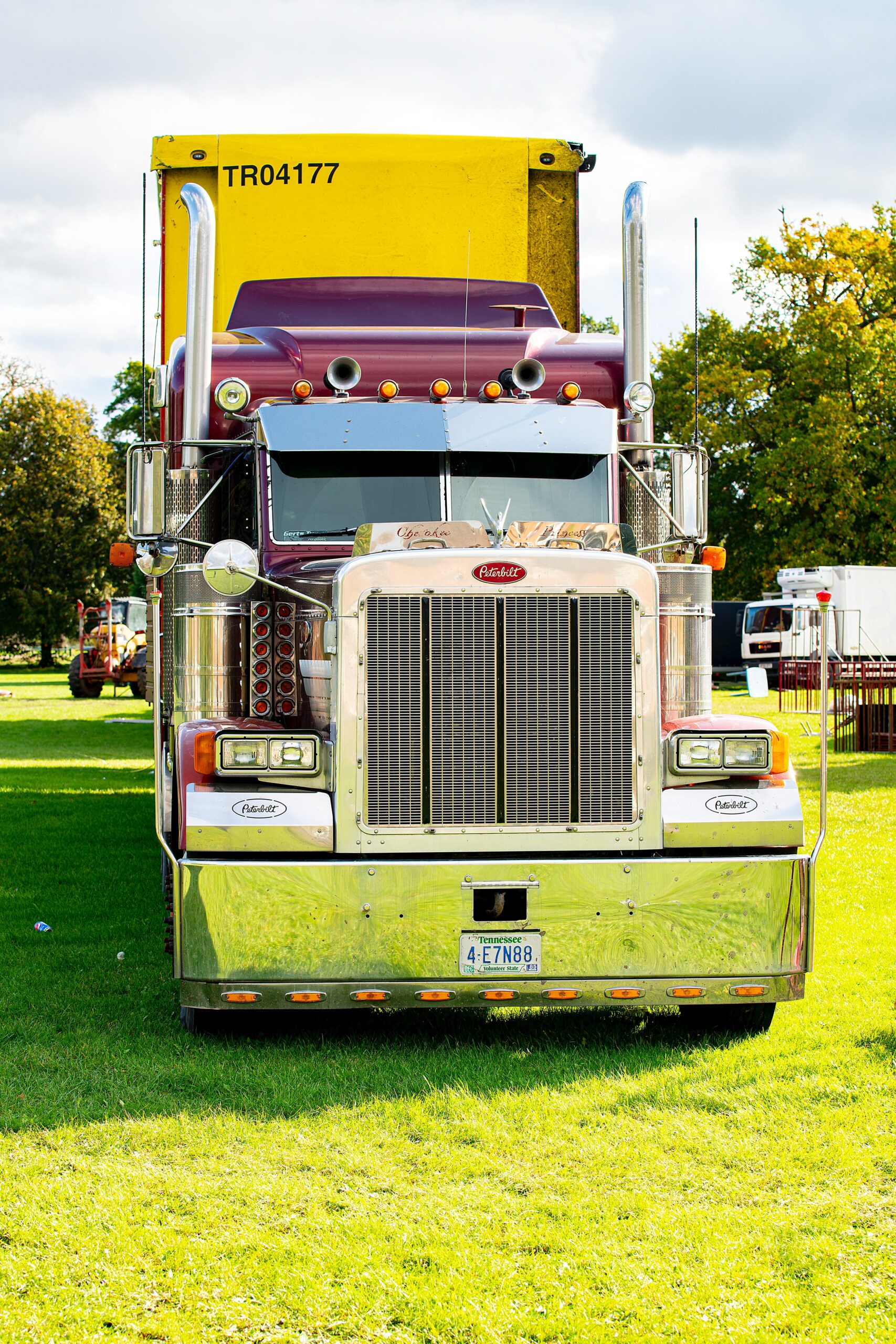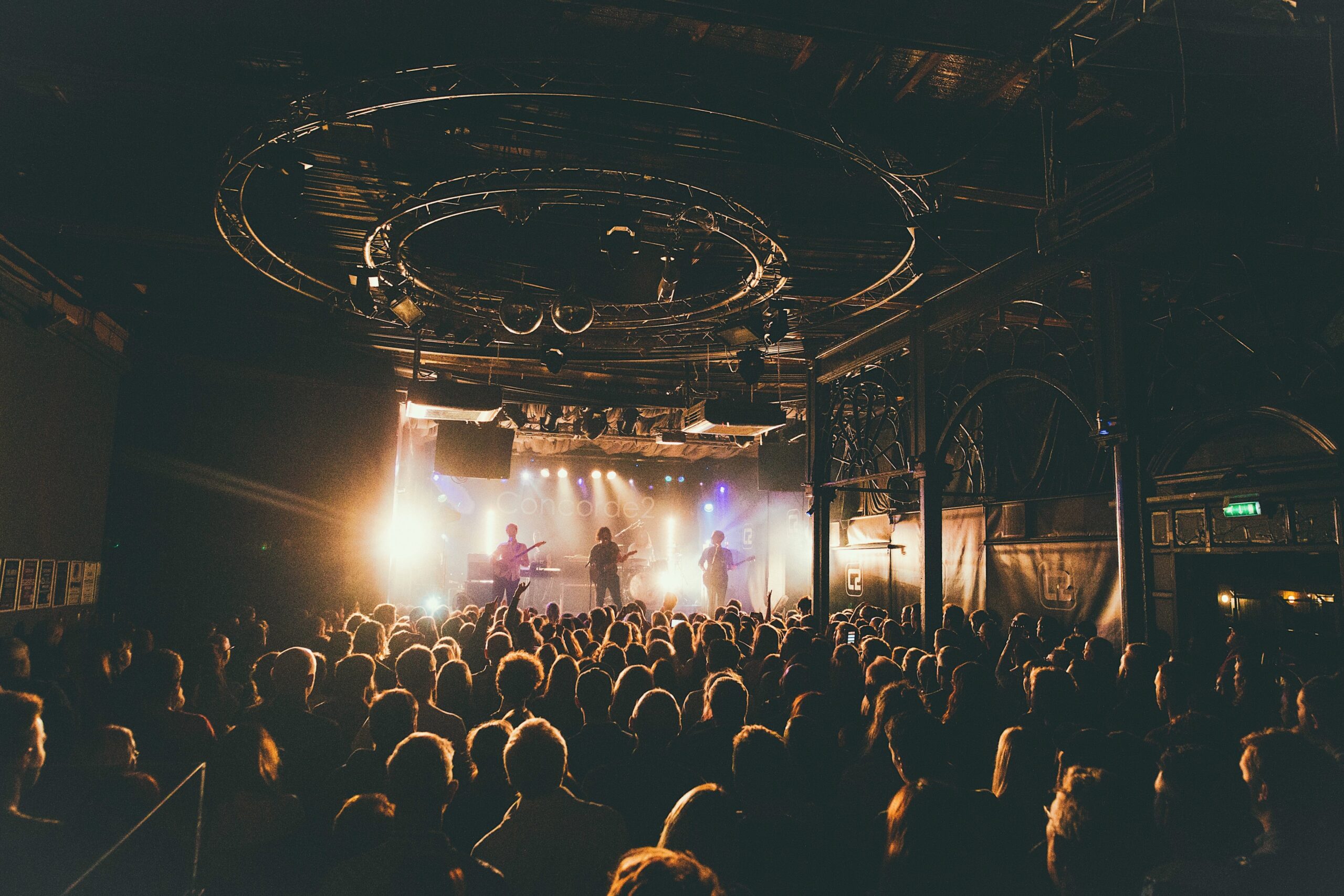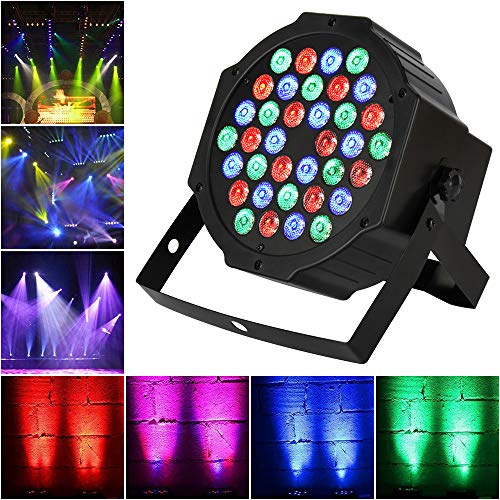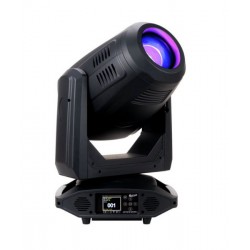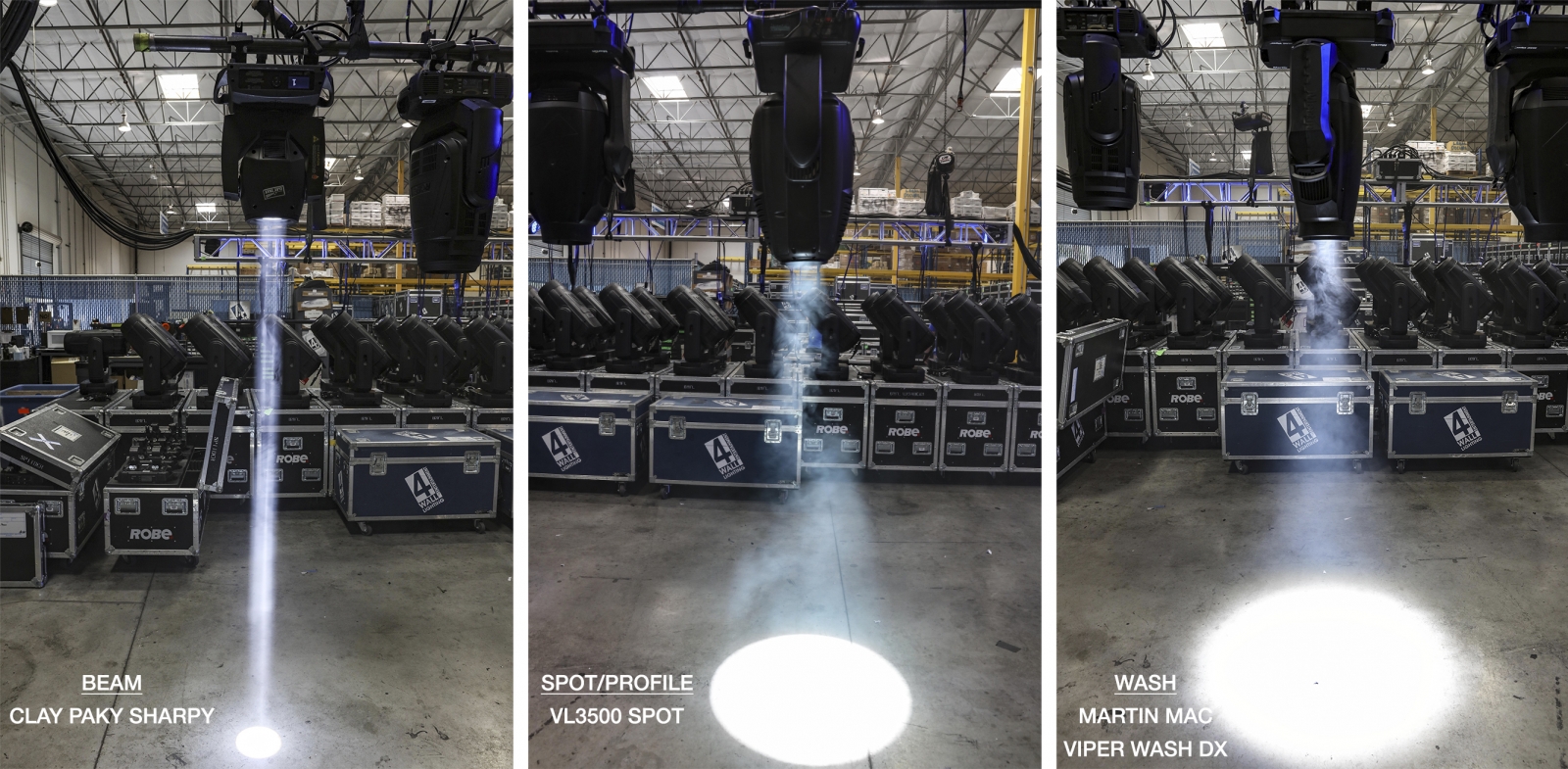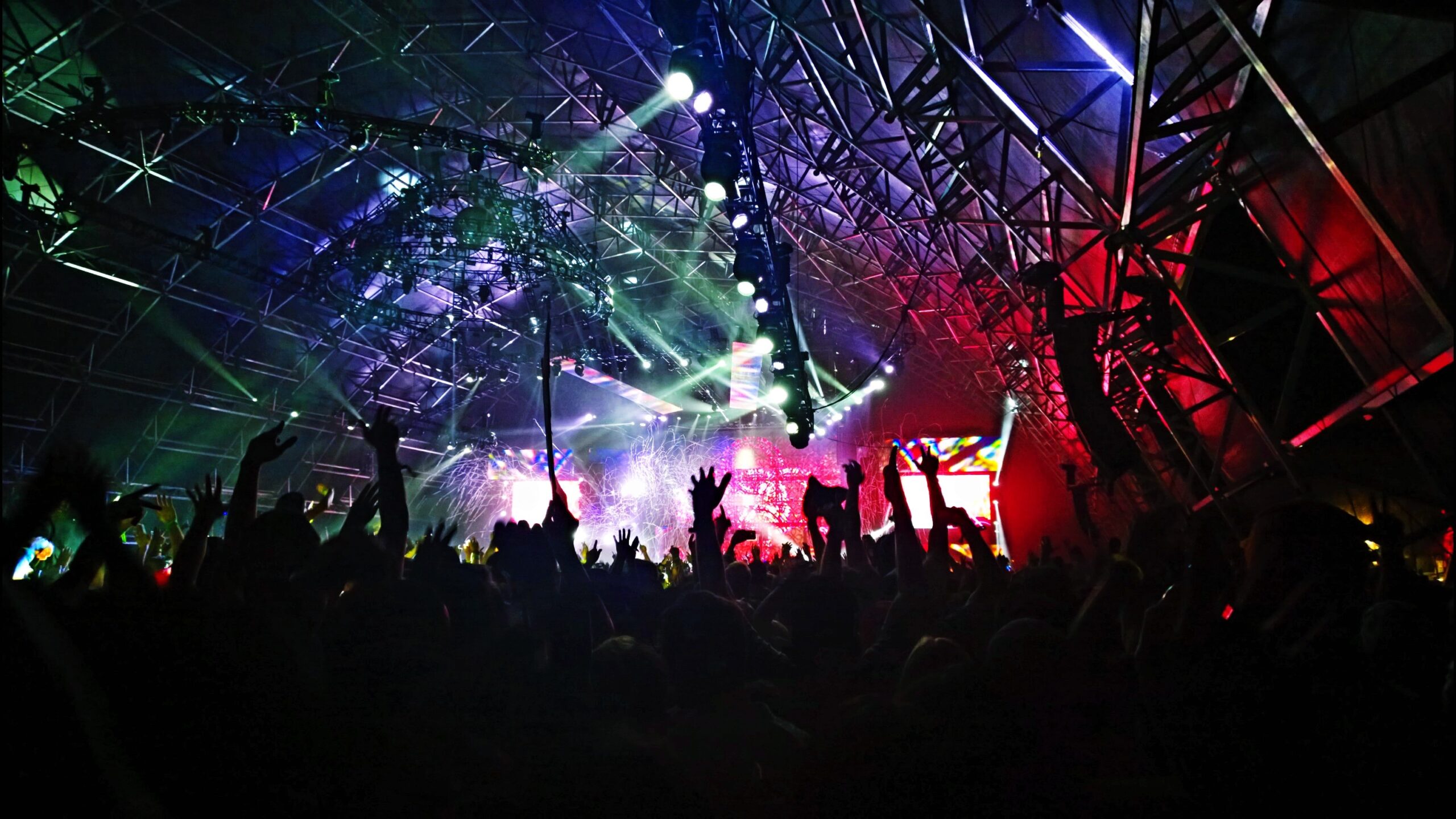Stage lighting Is an important facet of live event production, whether it’s a concert or another type of event. Band lighting for concerts often takes a different approach than for sound. For many shows lighting can be almost important as sound for performance’s impact on the audience.
Lighting is a very important part of a theater production. Lighting designers work at developing the right lighting for each scene of a stage production. Whether it’s mood, transition, or highlighting what the director wants the audience to focus on, lighting is critically important to the theater world.
To get the performance fees they demand for live concerts, top artists understand that they must do the same to entertain the audience. Beyond just performing their music these shows showcase the music in the context of a major stage production number involving dancers, props, lighting, special effects, and anything else they can add to take their show to the next level in the eyes of the audience. These live concert event productions are more akin to a theater production or even a Broadway show.
Concert Production Starts Long Before the Tour
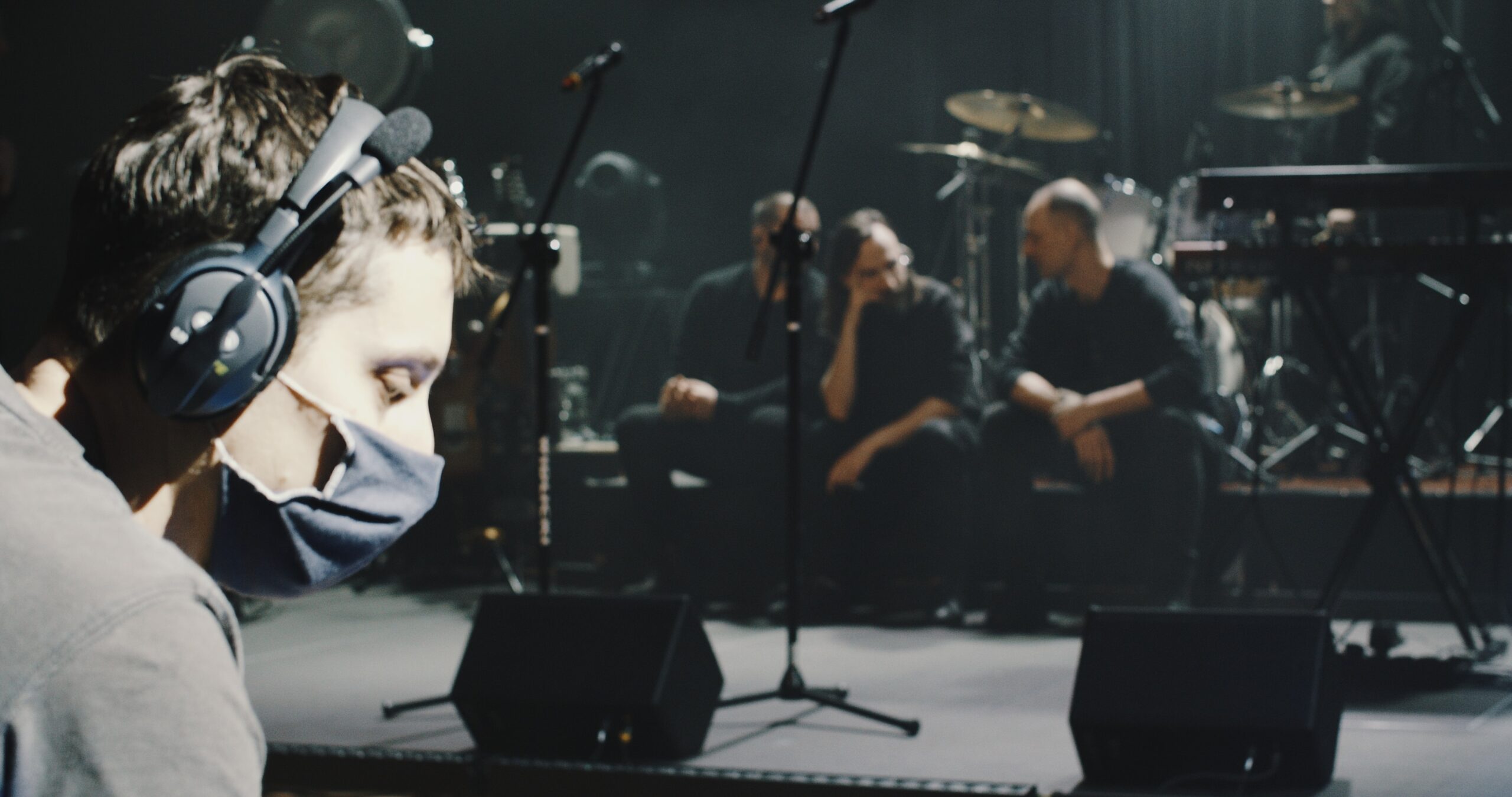
A lighting company will usually be hired to provide the lanterns, trussing, cables, and the other lighting infrastructure needed for the tour. The planned show is set up in a rehearsal venue so that the various components of the show can be worked out down to the smallest detail. Each show for the tour is rehearsed and choreographed with all aspects of the show planned out meticulously in advance of the tour.
With the lights and performers in place, the lighting designer will program or work with a programmer to pre-program the lighting needs for each song played, including lighting focus, intensity, color, and patterns of movement. The lighting designer may even use a virtual computer simulation to develop a draft program as a starting point prior to rehearsal. All the programming is stored in a lighting console for use during the actual concert.
The lighting director can then trigger specific lighting computer commands for certain lighting expressions in time with the music. The result is the same lighting and lighting effects night after night during the tour. Because lighting fixtures may be hung slightly different during the tour, the lighting director will update the position information of the lights to assure that the lighting is correct in the new venue.
Leaving nothing to chance, a major artist will travel with everything they need for the show, including lighting, sound, staging, sets, and anything else developed for the show during rehearsal. Every moment of the show has been rehearsed and everyone knows what’s coming, including the lighting director. A live event production of this kind is a huge effort with loading in, setting up, running the production, tearing down, and loading out for the next tour stop.
The reality is that such rehearsed concert productions are a relatively small number of the concerts that take place every day at different venues across the world. Most artists and bands go out on tour or perform for one-off events without traveling with the production components found in such a large, theatrical, concert production.
Most artists and band instead provide their technical rider to the venue or event to secure the precise equipment they need for the show. Because sound is so important, many prominent artists may bring their own sound mixing equipment and sound director to work their events. Bigger artists may also provide their own lighting console and lighting director as well. They count on the venue or promoter providing the lighting and sound amplification equipment they need as spelled out in the artists contract technical rider.
As you can imagine, the performance fees associated with those who bring their own consoles and techs will be higher than for bands that don’t.
The Reality of Live Event Production: Who Runs Stage Band Lighting?
For many concerts, the reality is that many Front of House (FOH) audio techs are expected to run the stage lighting as well. This is often the case when a temporary standard stage lighting configuration is used for a venue that doesn’t have a legacy lighting system. The same contractor provides both the sound and lighting, so their FOH techs know how to run both systems.
Lighting Configurations for Concert Production
The purpose of concert stage lighting for concerts is, first and foremost, to light up the performers so that the audience can get a good look at the performance. A well-designed lighting plan creates a personal connection between the audience members and the band or solo artist. Concert lighting should also be in tune with the band’s energy on stage. Concert lighting should complement the music, whether it’s slow and basic or fast and energetic.
A well-lit stage also helps the band members see what they need to see as they move about the stage. Other objectives include highlighting different areas or performers and fostering a mood in the audience. Back lighting can also act as a set for the performance.
There are no rules for concert band lighting, but here are some things to pay attention to when lighting a band for an outdoor or indoor concert.
- Most band lighting is insular to the performance area with little or no house lighting. All eyes should be on the band with no distractions. That doesn’t mean you shouldn’t plan to include the audience at some points in the show to make an impact as part of the performance.
- That means that band lighting is lower in brightness than some other types of lighting with more house lights in use.
- Lighting schemes for band are backlight focused. Backlights are used to convey vibrant and energetic patterns. Unless the band is using a video wall behind them the backdrop and its lighting acts as the “set” for the performance. That’s where haze comes in to paint the air with color and reflect the band’s emotion as they perform.
The Use of Color in Stage Lighting for Live Events
Color is important. If you never have explored color theory and the color wheel, it’s time you did to understand how color is used to light a concert or band. It’s the key to showing the emotion of the performer. For a more in-depth review of the psychology of color: https://www.colorpsychology.org/
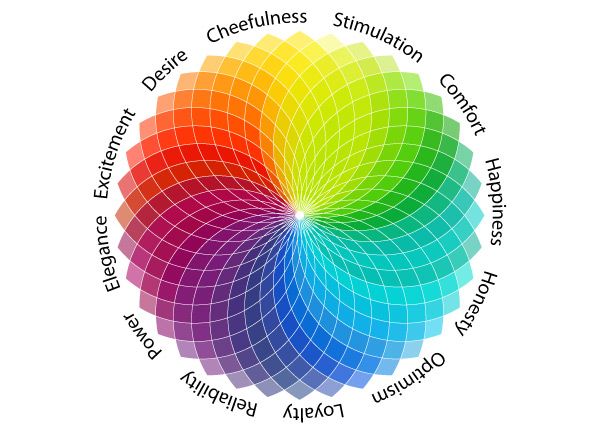
“Subtractive color theory” uses CMY (Cyan, Magenta and Yellow) gel screens either using a 3-color wheel or colored gels to subtract colors from a white light as the source. Because the lighting is subtractive, darker color shades will have less intensity using this lighting approach.
LED lighting instruments continue to improve, and their advantages outweigh older incandescent lighting instruments. That’s why they are the choice for lighting performances of all kinds. Mixing colors is easy with these lighting instruments.
- Red at Full + Green at Full = Yellow
- Red at Full + Blue at Full = Magenta
- Green at Full + Blue at Full = Cyan
- Red at Full + Green at Full + Blue at Full = White
Color and Emotion Is Important for Concert Production Band Lighting
Color stimulates emotions when viewed by audiences. Color is one of the ways bands express moods using stage lighting. Below are some general moods and feelings that tend to go with these basic colors. This is an oversimplification in that the shade or vibrancy of a color as well as the color itself affects the user.
Red = Excitement, Danger, Love, Intensity, Fear
Pink = Love, Light and Airy, Innocent, and Tenderness
Yellow = Happiness, Bright, Intellect, and Cheery
Amber = Awakening, Playful, Happy and Raw
Green = Natural, Health, Money, and Harmony
Aqua = Gentle, Simple, Water
Blue = Trustworthy, Night-time, Calm, Cold
White = Clean, Raw, Healthy, Purity, and Goodness
Unless an artist is performing in an older venue with a lighting system installed prior to the transition to LED lights, most lighting systems today primarily use LED lights. Instead of having to install a colored filter on the front of the lighting fixture to create a specific color, LED lights can provide dozens of color combinations with the push of a button or as part of their programming. Other great features are the fact that they only use about one tenth the electricity of older lanterns, they don’t get hot, and they are much lighter than older fixtures
Stage Lighting is Intelligent
Today’s lighting instruments go well beyond simply lighting the stage, band, or performer. It brings the performance greater impact through the many moods and excitement they can create. That’s where “intelligent lighting” comes into play. Any fixture that can be connected to a lighting console or computer software that can controlled remotely is an intelligent lighting fixture.
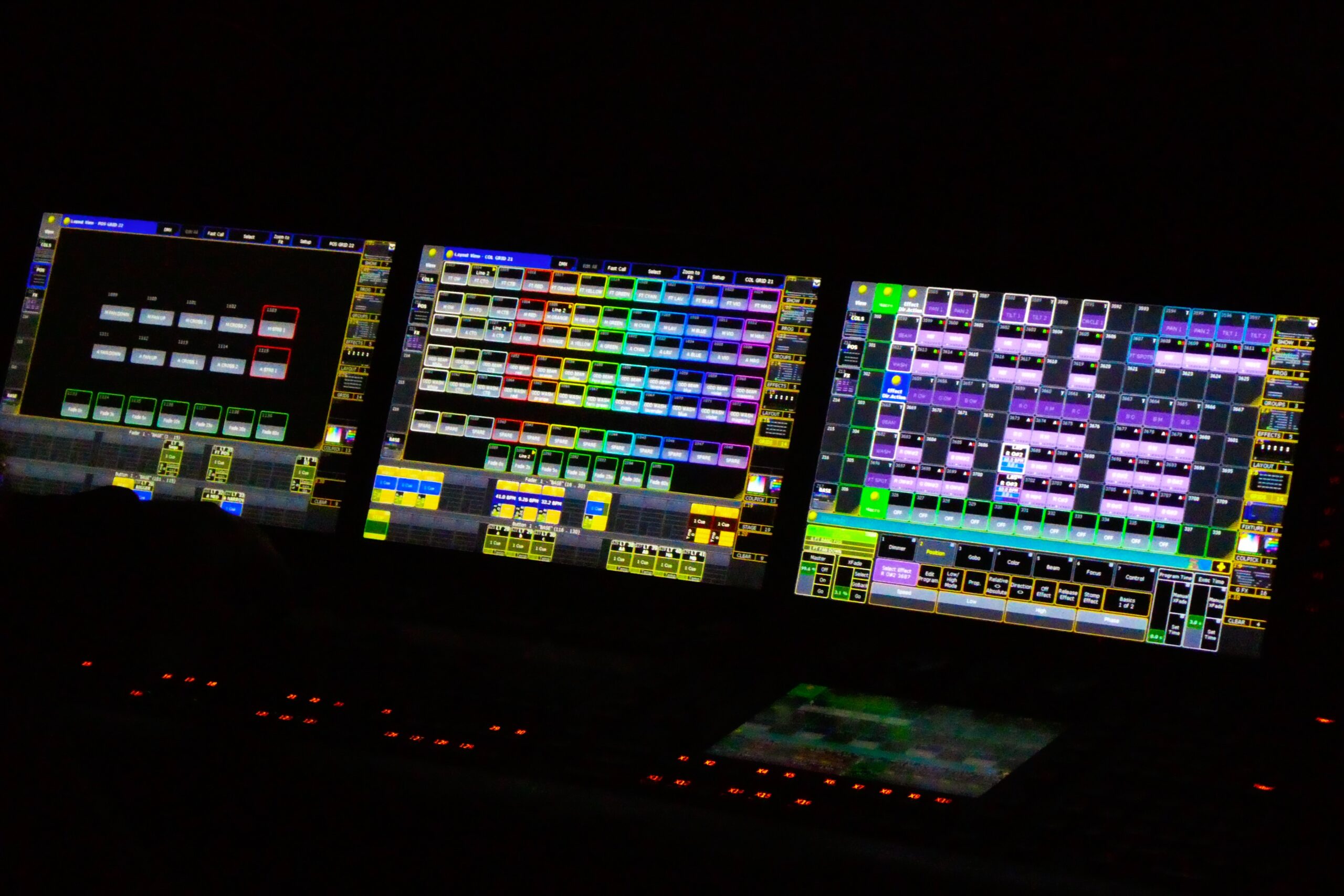
Each light is assigned a channel and a DMX address. When you want to send an instruction to a light, the DMX protocol issues it through the assigned channel or pathway. The lights are connected in series with a DMX in and a DMX out on each fixture. The lighting panel or console sends the instruction to change what a light is doing. The range of changes that can be made depend on the stage lighting fixture and the capabilities of the controller. More common variations include shifting color, dimming, or brightening the light coming from the fixture.
Moving Lights Are a Standard in Live Event Production
Then there are moving lights where the light’s direction can also be controlled. Good ones allow the controller to change all the properties of light on the stage, including intensity, location, color, sharpness, texture, and movement. The three main light categories are wash, beam, and spot/profile. Beam fixtures have the narrowest beam angle. The main difference is spot/profile and wash lights are at the edge, Beam have a sharp edge while wash light will always have a soft edge.
Today’s concerts, music festivals, night clubs and other events all use moving lights to enhance performances and create a look for bands and artists. Whether it’s moving or fixed lights, remember the lights should complement the music and not overpower what is being played on stage. If the lights are going to be used outdoors or exposed to a damp environment, you will want to use IP65, or better fixtures rated for outdoor use.
Concert Production May Be Synching Lights to the Music Being Performed
Most band lighting takes place in venues, events and with bands that don’t have a lighting designer to program the lights for their performances. Often these shows use sound-activated programs to sync the lighting to the music. Most LED lighting fixtures have sound-activated programs onboard. They will move with the beat of the music. An added benefit is that higher-end fixtures will also have other automated color mixing programs that create atmospheric effects. You can forget the programming and just let the lights follow the music.
Some Lighting Techniques for Live Events
A key to stage band lighting is anticipating what the music will be doing in the next instant. Most songs use a 4/4-time signature. What that means is that there are four beats to a bar or measure of the song. Songs may have other time signatures so knowing the time signature is important for anticipating lighting changes. The light should adjust in time with the music. Major changes should happen on the downbeats and as the song transitions from its parts, e.g., verse, chorus, bridge, etc.
As the tempo of the music picks up, the lighting should as well with frequent changes in movement and color. The lighting should reflect the emotion of the music. Good lighting will enhance the lyrics being sung.
Hazers: While not a lighting instrument, hazers are important for stage lighting for concert productions. Without haze, the lighting only shows where it strikes a surface. With hazers, the whole beam of light is shown from the fixture to where it lands. The difference in mood and energy is remarkable. This tool should be part of your stage lighting toolset.
Remember that a good lighting design for band lighting helps get the audience emotionally involved with the music. It often means the difference between a good concert and a great one.
Related Posts:
4 Key Audio Specs for Outdoor Concert and Festival Production
